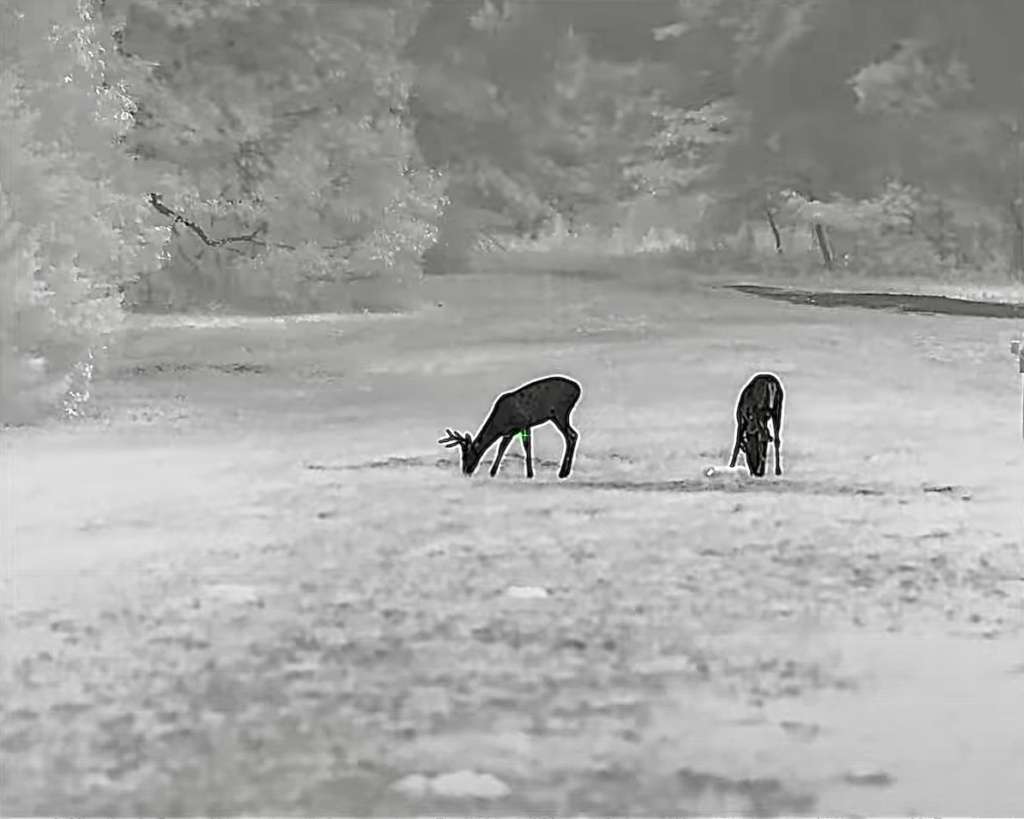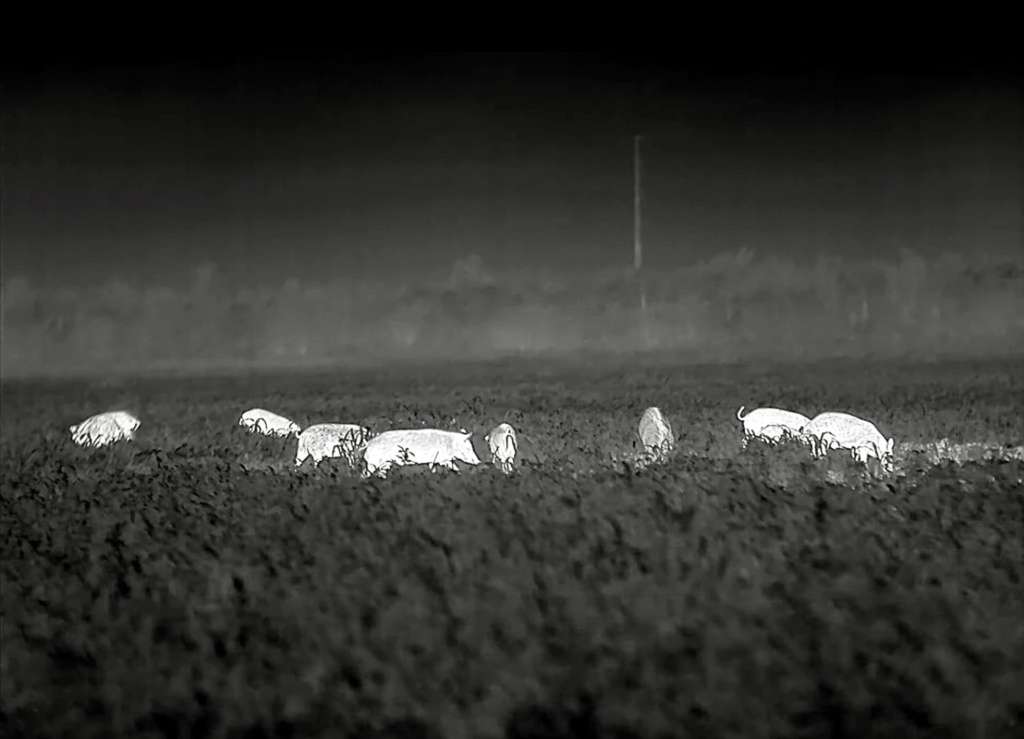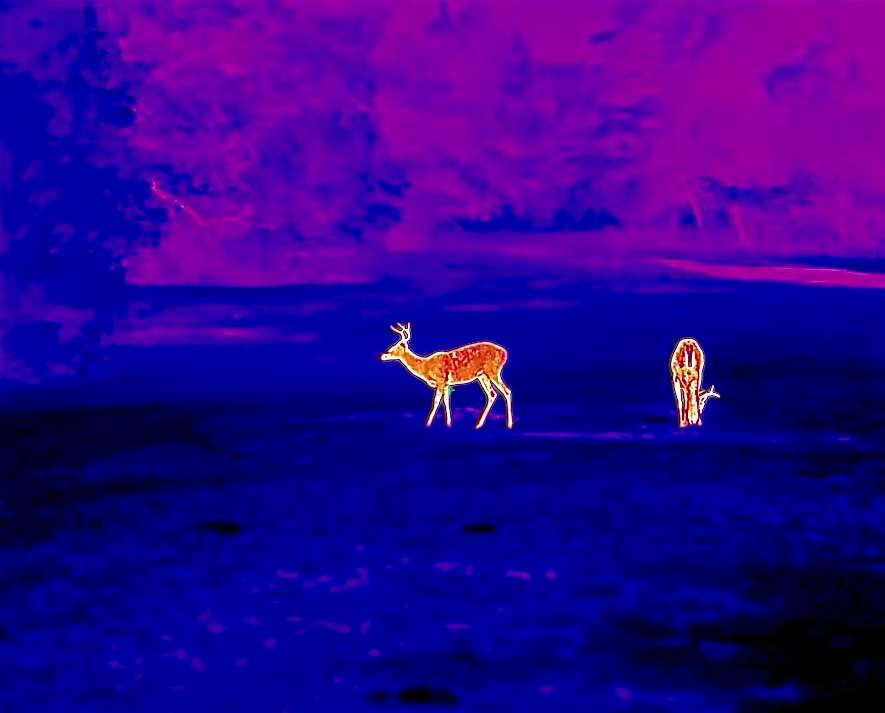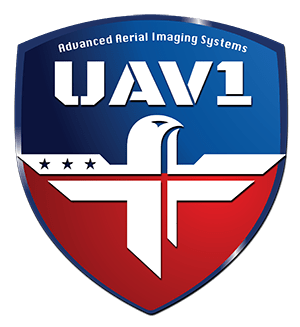2-in-1 Cyclone Dual-Purpose Long Range Thermal Imaging and Night Vision Binoculars

SPI CYCLONE T640-75-B
THERMAL BINOCULARS | PART #T640-75-B
CHARACTERISTICS
Detector type: Uncooled Microbolometer<br>Resolution: 640 x 480<br>FOV: 8.3° x 6.5° (H x V) IP67 Fully Waterproof
Visible and Thermal Infrared Imaging Channels Built-In



DESCRIPTION AND FEATURES
THE GAME CHANGING ALL-IN-ONE THERMAL BINOCULARS
A Thermal Imager, a Starlight CCD Night Vision Device, a Laser Range Finder, a Digital Magnetic Compass and a GPS, SPI Cyclone Multifunction Thermal Binoculars acquires the very best technologies in one device to provide high-precision target detection.
DUAL DETECTOR DUAL VISION
Using cutting edge high sensitivity (<40mk) 640*480 resolution thermal detector and starlight CCD (<0.0001Lux) detector for dual mode display, switch the button <1s and your night vision is just like daytime.
DESIGN FOR THE MILITARY, NOW YOU
Engaged in real battles and applied to military as well as security operations. With IP67 fully waterproof and 6 hours’ battery life, SPI Cyclone detects human from up to 3500m, able to work between -40 °C – 60°C.
Specifications Of The Cyclone All in One Long Range Thermal Binoculars System
- Detector Type: Uncooled Microbolometer
- Detector Resolution: 640 * 480px
- NETD: ≤40mk
- Spectral Range: 8-14um
- Pixel Pitch: 17um
- The focal length: 75mm
- FOV: 8.3°x6.5°
- Focusing: Automatic
- The focal length: 8-50mm
- Resolution: 540TVL
- Focusing: Electrical
- Display: OLED
- Polarity: White Hot/Black Hot/Multiple Color Modes
- Digital Zoom: 2x 4x
- Video Output: PAL
- Storage Video: Built-in 32G memory card
- Location/Time: Displays time and location on the screen
- GPS: CEP<5m
- Digital Magnetic Compass: Azimuth range: -180°-180°, Elevation range: -90°-90°, Accuracy<0.5°
- Laser Range Finder: Range:50-3000m (maximum 4000m), (Customizable)
- Battery Type: 18650 Rechargeable Battery
- Battery Life: Continuous Working Time After Charging≥6hs
- Detection Range: For Man: 2500m, For Vehicle: 1500m
- Recognition Range: For Man: 3500m, For Vehicle: 2500m
- Working Temp: -40°C ~ +60°C
- Storage Temp: -45°C ~ +65°C
- Protection: IP67
- Weight: ≤2100g (Including Batteries)
- Dimensions: 220mm*210mm*100mm

What are Long Range Thermal Imaging Binoculars?
Military thermal binoculars are specialized devices that enable users to see in complete darkness by utilizing optics with infrared radiation.
History of Thermal Imaging
- Discovery of Infrared Radiation: The existence of infrared radiation became known in 1800, thanks to the pivotal work of astronomer Sir William Herschel.
- Early Applications: Initially, infrared light was predominantly used for temperature measurement, leading to the creation of detectors and sensors for bolometers and thermometers.
- Innovations by Leopoldo Nobili: By applying the Seebeck effect in 1829, Nobili introduced the world to the first thermocouple, which was a refined thermometer and the precursor to the thermopile.
- Advancements Post WWI: After World War I, there were numerous discoveries benefiting civilians where long-range thermal imaging technology was successfully utilized.
Milestones in Military Thermal Imaging
- First Military Use: In 1929, Britain introduced the first military thermal binocular camera for air defense, an invention of Hungarian physicist Kálmán Tihanyi.
- US Developments: In 1947, Texas Instruments, in collaboration with the US military, developed the line scanner. However, its drawback was the one-hour image rendering time.
- British Defense Innovations: During the 1950s, Britain developed a linescan unit known as "Yellow Duckling", designed to detect underwater attacks. Although it had its flaws, it paved the way for the adoption of IR technology for military scanning.
- Modern Discoveries: Pyro-electronic scanning and solid-state thermal-imaging arrays have been fundamental in the development of modern thermal vision devices.
Types of Military Long Range Thermal Binoculars
Uncooled Detectors:
- Operate at ambient temperature.
- Use sensors that measure infrared heating values.
- Generally more affordable due to simpler production processes.
- Tend to have lower image resolution
Cooled Detectors:
- More expensive due to complex production technology.
- Require a cooling mechanism.
- Offer a higher precision image, suitable for military-grade applications.
The binoculars measure infrared radiation from objects and produce an image based on the heat detected. This allows for visibility both day and night.
Applications of Thermal Imaging Binoculars
Beyond military and defense applications, thermal imaging binoculars serve various purposes:
- Building Industry: Detect heat leakage or moisture in structures.
- Anti-terrorism: Monitor unauthorized border crossings.
- Firefighting: Detect hotspots in obscured or smoke-filled environments.
- Medicine & Veterinary: Used for diagnostic purposes.
- Astronomy: Explore celestial bodies.
The Technology Behind Long Range Thermal Imaging Binoculars
These devices leverage cutting-edge technology to detect temperature differences in objects. Features include:
- Digital photography and video recording.
- Professional-grade lenses.
- Compatibility with smart devices.
Modern thermal binoculars work on the principle of black body radiation, where any object above absolute zero emits infrared radiation.
Conclusion
Today's Long Range Thermal Imaging Binoculars, whether in LWIR or MWIR and running at various frequencies, offer unparalleled performance. With precision lenses and additional sensors like color night vision, GPS, and compasses, these devices have evolved to be indispensable tools for military and security operations. Their ability to operate in near-total darkness, challenging terrains, and adverse weather conditions makes them invaluable for surveillance and reconnaissance.

